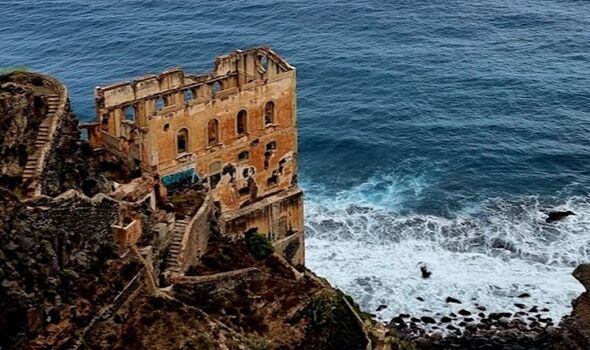Tenerife is a popular destination for thousands of tourists, attracted by its sandy beaches and breathtaking natural scenery.
This includes, of course, Mount Teide, which stands at 12,198 feet above sea level and is Spain’s highest peak.
Yet, another fascinating feature of the island that is not so well known are its abandoned buildings, which offer a window into the island’s intriguing past.
One such building is the former Gordejuela Water Pumping Station, which was recently voted the most beautiful ruin in the world by the travel portal Civitatis.
The ruins are nestled in the protected landscape of the Rambla de Castro, and overlook the sea.
The five-story pumping station was built after the British company Hamilton House acquired all shares in the local water company in 1902.
Designed by the military engineer Don Jose Galvan Callagher, it was completed a year later at a cost of one million Spanish pesetas.
The station was fitted out with a steam engine, the first of its kind on the Canary island.
Water was pumped 200 metres from springs at the bottom of the cliff to the top before being transported to banana plantations by means of a 12-kilometre (7.5 mile-long) aqueduct.
The water pump station boasted a 43-metre-high chimney, making it one of the tallest buildings on the island at the time.
The ruins are mainly those of a rectangular building at the bottom of the cliff, which housed the pumping equipment.
Tenerife has a collection of many more historical treasures, that tourists can see on hiking trails.
One such route goes past the Hacienda de Castro, the San Fernando fort, and the San Pedro chapel, which houses a valuable Baroque sculpture of the apostle.
The C18th San Fernando Fort was originally built to help protect the island from pirate raids, including those of the infamous Angel Garcia.
He was nicknamed Cabeza de Perro, which literally means “Dog Head” when translated into English.
Many of his operations were carried out in the Caribbean and he lived many years in La Habana, Cuba.
